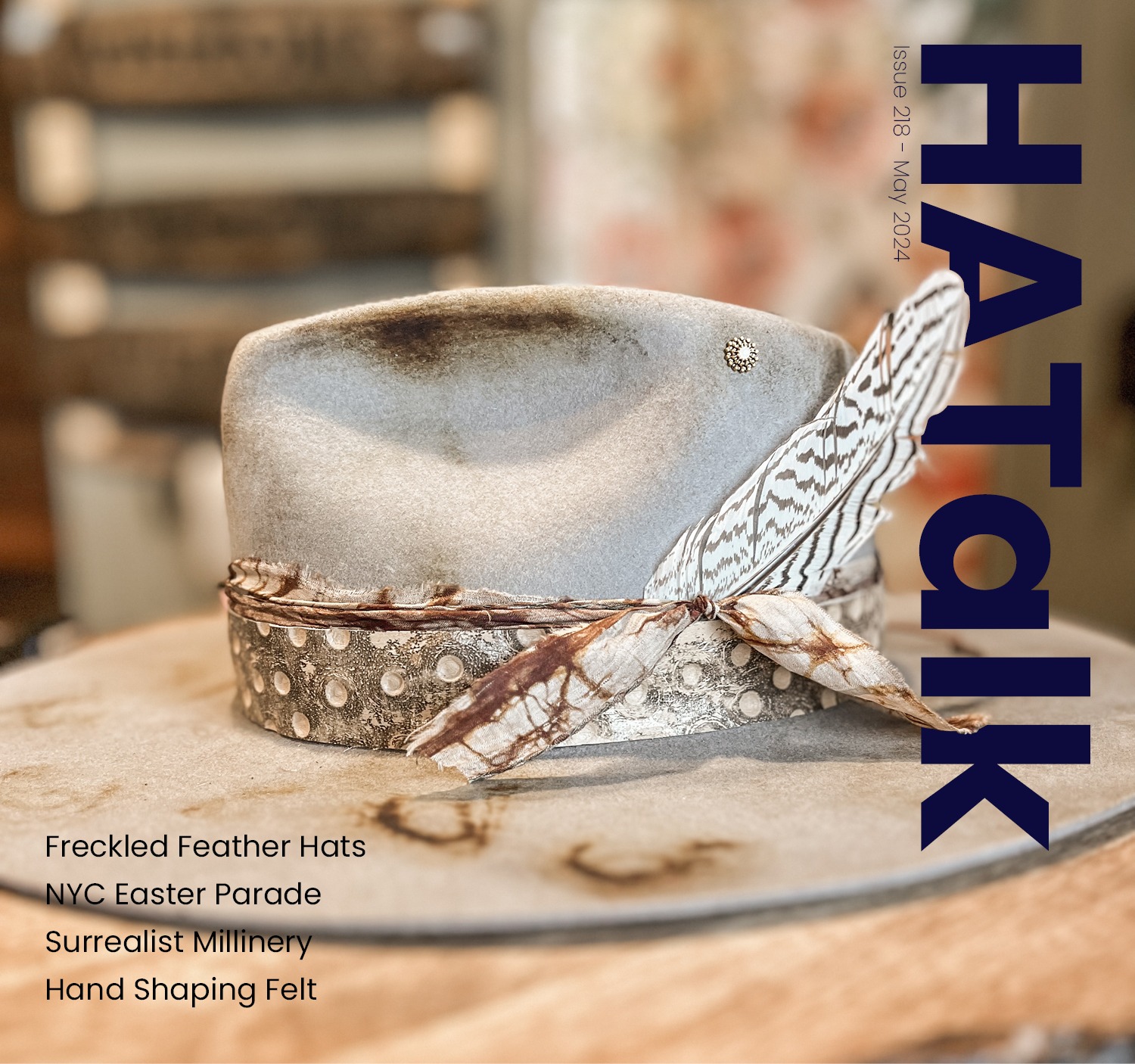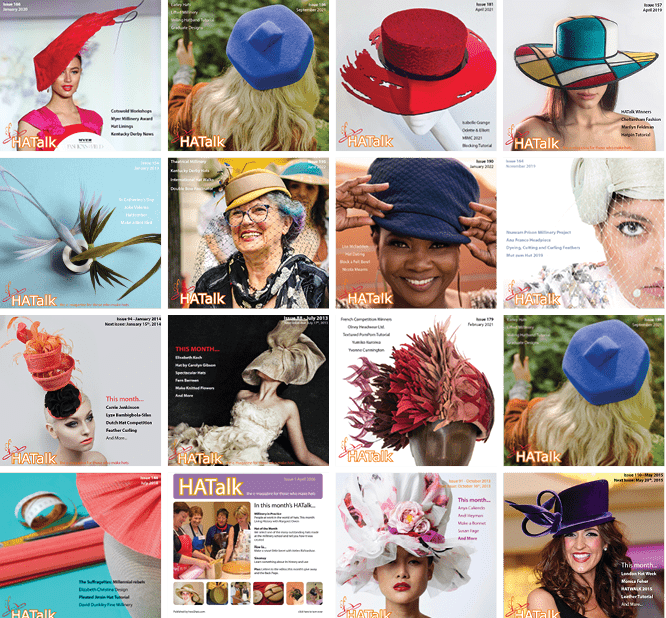Blog / Cash Flow Advice for Milliners

Cash Flow Advice for Milliners
Cash Flow: Managing the Financial Side of your Millinery Business
Ahhhh! We don’t want to talk about money (especially the Brits amongst us)!
But money is the most important thing about your business. We have already talked a little about having a money mindset. Now I’ve got some down to earth advice for managing your finances effectively so that money doesn’t hinder your ability to run your business!
Ever heard the phrase ‘cash is king’? It means that in business cash flow is everything. You can have a profitable business but if you don’t have cash in the bank, cash flow issues can quickly cripple you. Therefore, cash flow is the most important thing to be aware of in your millinery business.
So what is cash flow?
- Cash flow is the flow of money in and out of your business. The steadier the flow of money in and out, the easier your millinery business will be to maintain.
- Cash flow has nothing to do with profit. You can have good cash flow and not be profitable, so be careful!
- Cash flow is about receiving money and paying out bills with the incoming funds.
- Cash flow gives you the ability to stay on top of your debtors and not fall behind into debt or the inability to pay.
Millinery is a very seasonal business. This means that looking at cash flow is even more important because although we don’t have regular income throughout the year, we still have the same fixed overheads. Below, I’ve given you six pointers to help you keep a healthy cash flow.

6 Ways to Improve Cash Flow
Cash flow can sound like a scary thing in a seasonal business. As millinery business overheads usually grow at certain times of the year, planning your cash flow strategy is so important.
Cash flow forecast
If you have a few years of records behind you, you will be able to look back and see when your peaks and troughs in both sales and outgoings were. By tracking your cash flow historically, you will be able to predict when you can pay off bills and when you will have extra cash to buy new equipment for your millinery studio. If you haven’t got any cash flow history then you can use your projected goals to give you an idea of what cash flow you can expect. Just make sure you regularly review it and make revisions as necessary!
Save in the busy times for the quiet times
Put money aside in the feast times to get you through the famine times. Don’t just view cash in the bank as money to spend or to take out of the business. Instead, look at how that money is going to serve you later down the line.
Know when your big bills are due
The tax bill! Is it always a surprise and a scrape around to find the money to pay it? In all honesty, it shouldn’t be. We all know we have to pay tax if we are making a profit, so make allowances for it throughout the year. Tax is only a representation of the money you have already made. If you haven’t put money aside to pay it, you need to look at your expenditure! Have a separate bank account and put a percentage of each sale or each month’s takings aside. And the best thing is, if you put more away than your tax bill actually comes to, you’ll have an extra little bit of savings!
Quarterly or annual bills such as rent, VAT (sales tax) and insurance can come as an extra expense in the month they are due. Since you know they are coming, why not take the stress out of it and split the payments down into monthly amounts. Put that amount aside in a bank account every month and, ta-da, when they are due you have the money to pay them!
Save and budget
Sometimes it’s easy to just buy this and buy that, but every purchase for your millinery business should be considered. If you stop treating your business to a new hat block here and there and instead create a savings account with a little trickle going in each month, when you come to purchase the more expensive items for your business you will have some savings to spend. Plus, if you’ve put money into savings you will think longer and harder about what you spend it on. When you recognise the time and work it took to save that money, you will make better purchasing decisions and not just buy things because the money is in your account (come on, we’ve all convinced ourselves that we couldn’t possibly live without something that it turns out we rarely use!). Even when purchasing materials for new designs, set yourself a budget and stick to it! Money is easy to spend but hard to earn. Don’t waste your hard-earned money – create budgets and stick to them!
Loans and overdrafts
Of course, a totally solvent business would always be the dream. However, in reality, this is not always possible! Loans and overdrafts can be useful, either at the growth stage or in seasonal declines. Loans should really only be used for growth projects such as expansion (when you are spending money that you will see a return for on your investment) and overdrafts can be used to assist with cash flow for short periods of time.
Note: Paying off debt should always be a priority! If you are having trouble making payments, ask your debtors to come up with a payment plan that suits you. Could you pay off more in the busier months and less in the quieter months? It’s better than just ignoring them! If you are really struggling, it is also a good idea to contact a debt relief charity like NFCC or National Debtline for free help and advice
Extra business activities
Taking on alternative work in quiet times is a great way of keeping cash flow going. If you normally work 1-2-1 with clients, why not take on costume or wholesale work during less busy times of the year. Alternatively, holding a sample sale is a great way of clearing old stock and getting a quick cash injection into the bank. Plus, you’ll get some studio space back as you lose those slightly tired looking pieces!
When it comes to managing cash flow for your millinery business, budgeting, projecting and having lots of different bank accounts will keep your cash moving and big payment worries at bay.
Beverley x

About the Author
Beverley Edmondson is a British milliner and business mentor. She works directly with milliners and creatives mentoring them to help them reach their business dreams.
See Beverley’s full bio HERE.
Popular Articles
Latest e-Magazine
Featured Supplier

Cash Flow Advice for Milliners
Cash Flow: Managing the Financial Side of your Millinery Business
Ahhhh! We don’t want to talk about money (especially the Brits amongst us)!
But money is the most important thing about your business. We have already talked a little about having a money mindset. Now I’ve got some down to earth advice for managing your finances effectively so that money doesn’t hinder your ability to run your business!
Ever heard the phrase ‘cash is king’? It means that in business cash flow is everything. You can have a profitable business but if you don’t have cash in the bank, cash flow issues can quickly cripple you. Therefore, cash flow is the most important thing to be aware of in your millinery business.
So what is cash flow?
- Cash flow is the flow of money in and out of your business. The steadier the flow of money in and out, the easier your millinery business will be to maintain.
- Cash flow has nothing to do with profit. You can have good cash flow and not be profitable, so be careful!
- Cash flow is about receiving money and paying out bills with the incoming funds.
- Cash flow gives you the ability to stay on top of your debtors and not fall behind into debt or the inability to pay.
Millinery is a very seasonal business. This means that looking at cash flow is even more important because although we don’t have regular income throughout the year, we still have the same fixed overheads. Below, I’ve given you six pointers to help you keep a healthy cash flow.

6 Ways to Improve Cash Flow
Cash flow can sound like a scary thing in a seasonal business. As millinery business overheads usually grow at certain times of the year, planning your cash flow strategy is so important.
Cash flow forecast
If you have a few years of records behind you, you will be able to look back and see when your peaks and troughs in both sales and outgoings were. By tracking your cash flow historically, you will be able to predict when you can pay off bills and when you will have extra cash to buy new equipment for your millinery studio. If you haven’t got any cash flow history then you can use your projected goals to give you an idea of what cash flow you can expect. Just make sure you regularly review it and make revisions as necessary!
Save in the busy times for the quiet times
Put money aside in the feast times to get you through the famine times. Don’t just view cash in the bank as money to spend or to take out of the business. Instead, look at how that money is going to serve you later down the line.
Know when your big bills are due
The tax bill! Is it always a surprise and a scrape around to find the money to pay it? In all honesty, it shouldn’t be. We all know we have to pay tax if we are making a profit, so make allowances for it throughout the year. Tax is only a representation of the money you have already made. If you haven’t put money aside to pay it, you need to look at your expenditure! Have a separate bank account and put a percentage of each sale or each month’s takings aside. And the best thing is, if you put more away than your tax bill actually comes to, you’ll have an extra little bit of savings!
Quarterly or annual bills such as rent, VAT (sales tax) and insurance can come as an extra expense in the month they are due. Since you know they are coming, why not take the stress out of it and split the payments down into monthly amounts. Put that amount aside in a bank account every month and, ta-da, when they are due you have the money to pay them!
Save and budget
Sometimes it’s easy to just buy this and buy that, but every purchase for your millinery business should be considered. If you stop treating your business to a new hat block here and there and instead create a savings account with a little trickle going in each month, when you come to purchase the more expensive items for your business you will have some savings to spend. Plus, if you’ve put money into savings you will think longer and harder about what you spend it on. When you recognise the time and work it took to save that money, you will make better purchasing decisions and not just buy things because the money is in your account (come on, we’ve all convinced ourselves that we couldn’t possibly live without something that it turns out we rarely use!). Even when purchasing materials for new designs, set yourself a budget and stick to it! Money is easy to spend but hard to earn. Don’t waste your hard-earned money – create budgets and stick to them!
Loans and overdrafts
Of course, a totally solvent business would always be the dream. However, in reality, this is not always possible! Loans and overdrafts can be useful, either at the growth stage or in seasonal declines. Loans should really only be used for growth projects such as expansion (when you are spending money that you will see a return for on your investment) and overdrafts can be used to assist with cash flow for short periods of time.
Note: Paying off debt should always be a priority! If you are having trouble making payments, ask your debtors to come up with a payment plan that suits you. Could you pay off more in the busier months and less in the quieter months? It’s better than just ignoring them! If you are really struggling, it is also a good idea to contact a debt relief charity like NFCC or National Debtline for free help and advice
Extra business activities
Taking on alternative work in quiet times is a great way of keeping cash flow going. If you normally work 1-2-1 with clients, why not take on costume or wholesale work during less busy times of the year. Alternatively, holding a sample sale is a great way of clearing old stock and getting a quick cash injection into the bank. Plus, you’ll get some studio space back as you lose those slightly tired looking pieces!
When it comes to managing cash flow for your millinery business, budgeting, projecting and having lots of different bank accounts will keep your cash moving and big payment worries at bay.
Beverley x

About the Author
Beverley Edmondson is a British milliner and business mentor. She works directly with milliners and creatives mentoring them to help them reach their business dreams.
See Beverley’s full bio HERE.







